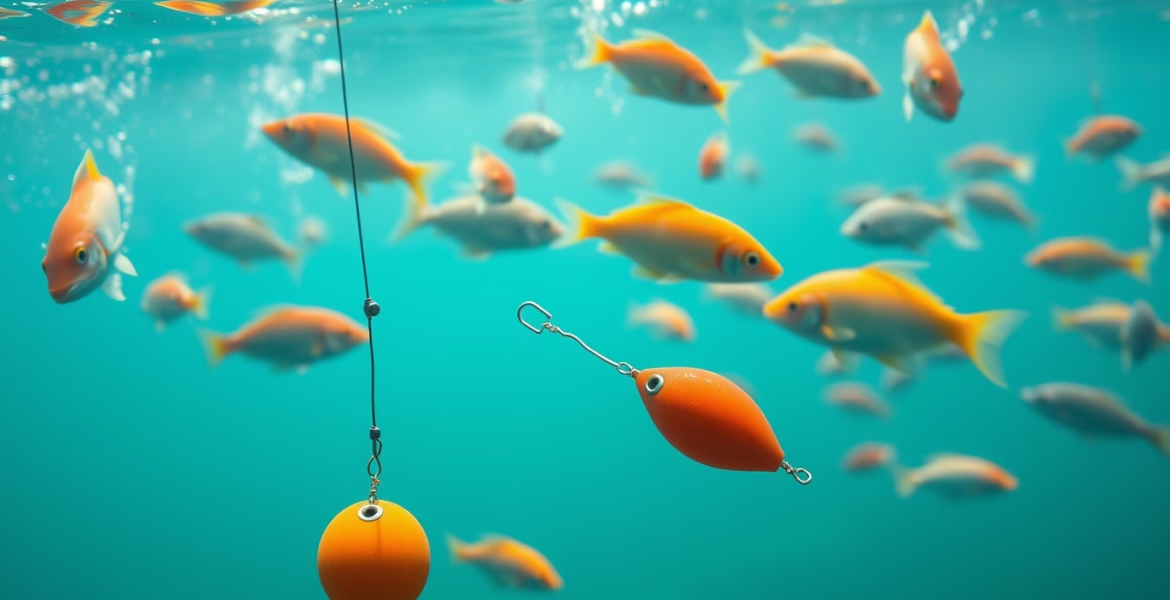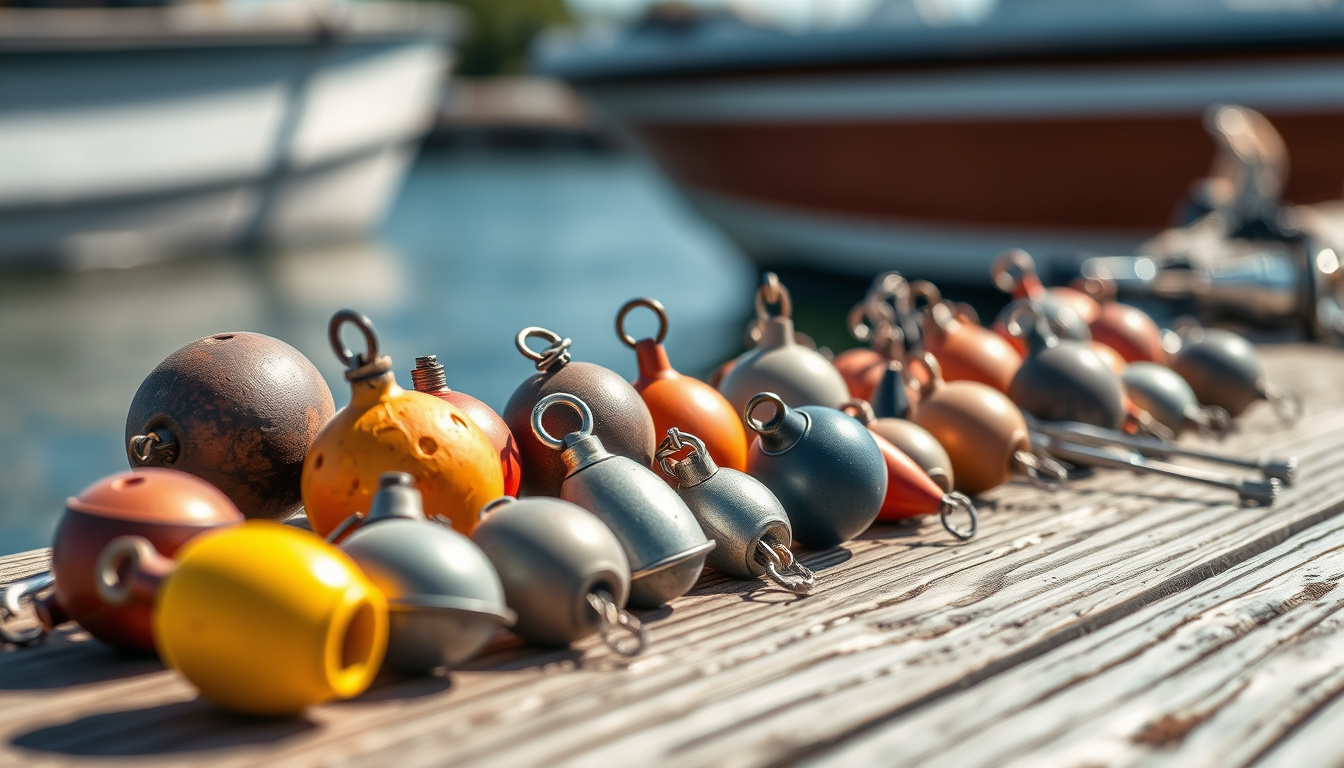
Fishing Sinkers: Essential Tips for Choosing the Perfect Weight
On July 5, 2025 by Andy FordWhen you fish, the right gear helps you win. In your tackle box, fishing sinkers help your bait reach the right place and depth. Picking the best weight for sinkers can change your cast, bait look, and fishing win. In this guide, you see simple tips to find the best weight for sinkers. It helps your fishing life improve.
What Are Fishing Sinkers and Why Are They Important?
Sinkers are small, dense weights. They attach to your fishing line. They help your bait or lure sink fast and stay at a set depth. Use the wrong weight and your bait may drift near the top or move with the current, lowering your chance to catch fish.
The right sinker weight makes sure:
- Your bait reaches the right depth.
- You can cast far and true.
- Your bait stays steady in water flows.
- You do not snag on rocks or weeds.
Know how sinker weight works with the water to pick the best one.
Factors to Consider When Choosing Fishing Sinkers
1. Water Conditions
Water flow and strength decide the sinker weight. In calm lakes or ponds, light sinkers work well because the water does not push hard. In a river or offshore water with strong flow, heavy sinkers keep your bait in place.
2. Depth of Fishing
How deep you fish sets your sinker choice. Deeper water means a heavier sinker to fight the water push. In shallow water, light sinkers stop your bait from sinking too far.
3. Type of Fishing Technique
Some fishing ways need special sinker weights:
- Bottom fishing: Heavy sinkers hold the bait near the bottom.
- Float fishing: Light sinkers keep the bait just under the water’s surface.
- Casting: Heavy sinkers help you cast farther, but too heavy can scare the fish or make your bite hard to sense.
4. Bait and Tackle Setup
The weight of your bait and type of line guide your sinker size. Heavy baits sometimes work with light sinkers, while light baits need enough weight to sink well. The strength and stretch of your line also count in keeping balance and feeling bites.
Common Types of Fishing Sinkers
Here are some sinker types to know:
- Split Shot Sinkers: Small, round weights that clip on the line. They work for light weighting in fresh water.
- Egg Sinkers: Oval in shape and slide on the line. They allow fish to take the bait with little drag.
- Bullet Sinkers: Tapered shape helps with casting distance and stops snags in weeds or rocks.
- Bank Sinkers: Heavy weights with a flat base used for bottom fishing in moving water.
- Pyramid Sinkers: Pointed tip helps them stick in sandy or muddy bottoms; good for surf fishing.
How to Determine the Perfect Weight for Your Fishing Sinkers
Finding the right weight comes with testing and learning your water. Try these tips:
- Start with a light sinker. Increase the weight until your bait sinks well without extra drag.
- If you need to cast far, try a heavier sinker.
- Match sinkers to your line strength so you do not break the line.
- Watch how the fish bite. If fish take food at one depth, adjust your sinker to keep bait there.
- Test different weights when water flow or depth changes to keep bait in the right spot.
A Step-by-Step Guide to Weight Selection
Here is a simple list for common fishing spots:
- Still water, shallow depth (less than 5 feet): Use 1/16 to 1/4 oz sinkers.
- Still water, moderate depth (5-15 feet): Use 1/4 to 3/4 oz sinkers.
- Slow-moving river or stream: Use 3/8 to 1 oz sinkers.
- Fast-moving river or deep water: Use 1 to 3 oz sinkers.
- Surf fishing or offshore: Use 3 oz or heavier sinkers based on water flow.
Tips for Using Fishing Sinkers Effectively
- Do not use weights heavier than needed, as they may keep your bait from moving naturally.
- Use sinkers that match your rod and reel to keep the line balanced.
- Check your sinkers often. Replace any that look rusted or worn so your tackle works well.
- Pick sinkers made from safe materials like steel or bismuth. Lead sinkers can harm nature.
FAQ: Common Questions About Fishing Sinkers
Q1: What size sinker should I use for bass fishing?
For bass, medium weights from 1/8 oz to 3/8 oz work well. Your choice depends on water depth and if the water is calm or flowing.
Q2: Can I use the same fishing sinkers for freshwater and saltwater?
Some sinkers work in both. For saltwater, use ones that do not rust, such as stainless steel or tungsten.
Q3: How do fishing sinkers affect casting distance?
Heavy sinkers add momentum to your cast. Yet, too heavy a weight can slow down your lure action and bite feel.
Expert Insight: The Importance of Choosing the Right Weight
The American Fishing Tackle Manufacturers Association says, "Picking the right sinker weight helps show your bait at the best depth and makes fishing more successful by matching water conditions and techniques" (source). This keeps your sinker weight choice a key part of fishing.

Conclusion: Boost Your Fishing Game with the Perfect Fishing Sinkers
Choosing the best sinker weight is more than a gear pick—it is a smart move that affects your bait, cast, and catch rate. Think about your water, target fish, and fishing style to choose sinkers that bring good results. Test different weights, watch the water, and adjust your gear.
Ready to boost your fishing experience? Start filling your tackle box with the right sinkers today and see the change on your next trip. The best weight is waiting—your best catch is near!
Archives
Calendar
| S | M | T | W | T | F | S |
|---|---|---|---|---|---|---|
| 1 | 2 | 3 | 4 | 5 | 6 | |
| 7 | 8 | 9 | 10 | 11 | 12 | 13 |
| 14 | 15 | 16 | 17 | 18 | 19 | 20 |
| 21 | 22 | 23 | 24 | 25 | 26 | 27 |
| 28 | 29 | 30 | ||||
